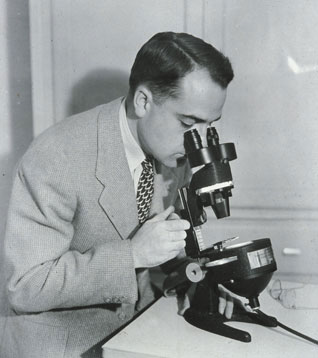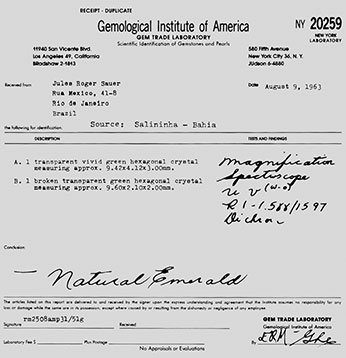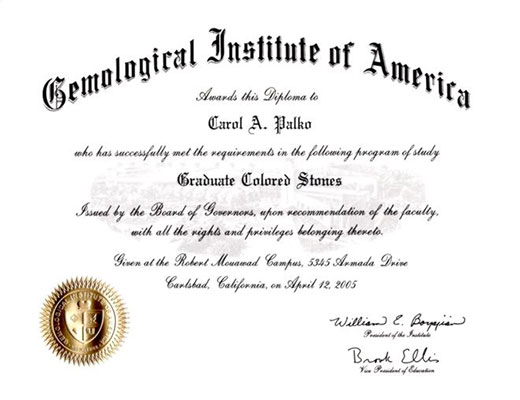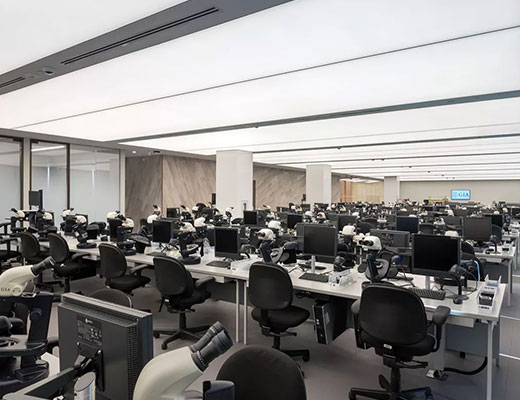open 10 am - 7 pm
laboratory is closed
The history of the foundation and development of GIA


The History of the Gemological Institute of America (GIA) originates from the trip of Robert Jewel, an amateur jeweler of gems (Robert M. Shipley, 1887-1978) from Kansas (USA) to Paris, and then to London, where he studied at the British Jewelers Association courses (Great Britain's National Association of Goldsmiths).
In 1929, returning to the United States after training, Shigley began working on a course of gemology lectures. The result was the first specialized lecture course for jewelers in gemology, read by him on September 16, 1930 in the USA, which was organized by Armand Jessop (1876–1942), the son of the famous jeweler Joseph Jessop (Joseph Jessop, 1851-1932) San Diego.
In connection with the high popularity of the lectures, Robert Shipley with several enthusiasts in 1931 opens in Los Angeles (Los Angeles) independent courses on the basics of gemologists, calling them the Gemological Institute of America, in which Shipley himself assumed the post of President of GIA and he was until 1941. The school was a small room where lectures and practical laboratory work took place. Training at the institute was provided both on a full-time and part-time basis.
In 1933, the son of the founder, also Robert Shipley (Junior) joins the GIA. At first, he began to oversee the direction of training and research, but later his vocation was the construction of specialized gemological equipment.
In parallel with the development of the teaching industry, Robert Shipley begins to publish the periodical collection Gems & Gemology, the first issue of which dates from 1934. It covered the main problems of gemology, as well as familiarized readers with the innovations in the world of the market of precious and jewelry stones. In the first years of release, the magazine came out once in two months, but by the time the 50-year-old GIA was becoming a monthly periodical glossy publication, characterized by high-quality printing.
The development of gemology as a science prompted Shipley to the need to develop directions for the improvement and development of new equipment for the diagnosis of minerals. In 1934, GIA draws up a patent for a jewelry magnifying glass triplet, which later became the main working tool of the gemologist and the first “star accord” of the work of Robert Shipley (the Younger). His next invention was the first specialized gemological stereo microscope, released in 1937. In its design, the effect of dark-field illumination was used for the first time for gemmological purposes. In 1938, this device was patented under the name "DiamondScope".
In 1940, Richard Liddicoat (Jr., 1918-2002) joined the GIA as Assistant Director of Education. In 1948, he published the first edition of the Handbook of Gem Identification, and in 1953 presented the GIA Diamond Evaluation System, which would later be highlighted in a separate course in the curriculum.
After the end of the Second World War, Robert Shipley (Junior) leaves the GIA and organizes his own company for the production of gemological equipment, which in 1966 became the property of the Gemological Institute and transformed into the production division of GEM Instruments.
The year 1947 in the history of the GIA is marked by the recruitment of Robert Crownchild (G. Robert Crowningshield, 1919-2006), who later became one of the leading experts of the company.
The first diplomas of the gemological institute in the specialty “Evaluation in gemology” (Graduate in Gemology) began to be issued in 1948 on the basis of passing courses.
In 1949, the GIA opened a laboratory in New York, which was led by Richard Liddicoat. Initially, it provided services for pearl identification and gemological evaluation of diamonds. Based on the results of the latter, the design of full-length gemological evaluation of diamonds - Diamond Grading Report - started in 1955.
Continuous improvement of diamond refinement methods required scientists to invent new methods for their identification. So, in 1956, Robert Crownshild successfully applied the spectroscope to solve the problem of identifying radiation-ennobled color yellow diamonds.
By 1960, the library of publications of the Gemological Institute of America was replenished with the Diamond Dictionary (The GIA Diamond Dictionary), which later became the source of the same terminology of the diamond-diamond industry. And some time later, in 1987, the GIA had the most complete collection of specialized gemological publications of various topics.
The gradual expansion of distribution and increasing the authority of GIA in 1989 leads to the opening of courses in Korea, and then in England (London), the United Arab Emirates (Dubai), India (Mumbai, Surat, New Delhi), in Thailand (Bangkok), China (Hong Kong, Taipei, Taiwan), Botswana (Gaborone). From 1996 to 2014, inclusive full-time and part-time classes were also held in Moscow
In 2004, the diamond appraisal system was complemented with a round diamond appraisal system based on the resultant appearance and optical effects in a diamond. Later, a diagrams of proportions are introduced for diamonds, allowing the consumer to visualize the parameters of the stone.
The beginning of the 2000s is characterized by an increase in the number of synthetic diamonds in the jewelry market. In this connection, the GIA in 2007 introduces for them a separate type of report that looks different from the reports for natural stones in order to eliminate the possibility of confusion and fraud.
Currently, the number of GIA lab complexes is constantly increasing. Over the past ten years, they have been opened in various parts of the world - Mumbai (India), Johannesburg (South Africa), Garabone (Botswana), Tokyo (Japan) and Ramat Gan (Israel).



